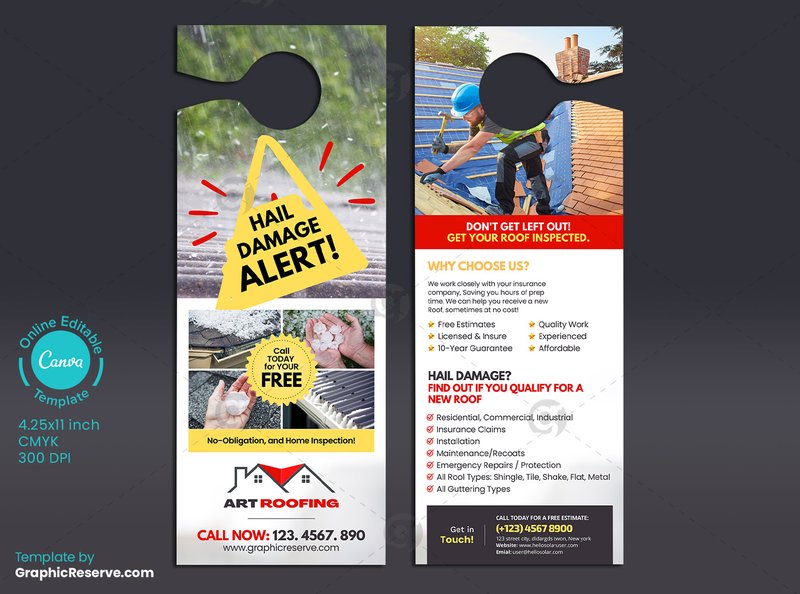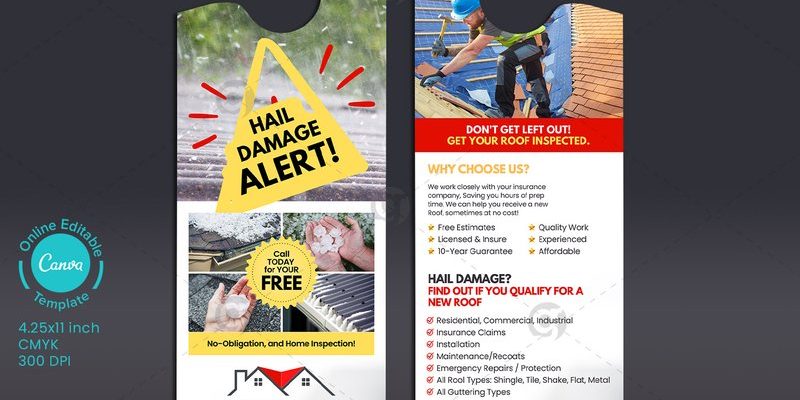
Here’s the thing: if you’ve ever come home to a frozen or dented door handle after a storm, you know how quickly weather can mess things up. Ice storms can freeze your lock solid, making it impossible to insert a key or sync a remote-controlled deadbolt. Hail can dent, scratch, or even crack fragile finishes, leaving your hardware looking rough and possibly letting in water that leads to rust. Protecting your door hardware from nature’s nastiest moods isn’t just about keeping things looking nice—it’s about avoiding annoying (and sometimes expensive) repairs or replacements.
Instead of waiting for the next big storm to mess with your entryway, it makes sense to take a few simple steps before trouble hits. Let’s dig into *how to prevent exterior door hardware damage from hail and ice storms*—and keep your doors working, looking sharp, and secure all year round.
Why Exterior Door Hardware Is So Vulnerable During Storms
First, let’s look at why your door hardware, of all things, seems to take the brunt of harsh weather. Unlike your roofing or siding, these parts are small, exposed, and designed for hands, not hailstones. Handles, keypads, latches, and remotes often have moving parts and delicate finishes that can’t shrug off a direct hit from a golf-ball-sized chunk of ice.
Hailstorms can create dents and chip finishes. When the protective coating is compromised, even the sturdiest hardware from top brands like Kwikset or Schlage can start to rust. Ice storms pile on another problem—water creeps into tiny cracks, freezes, and expands. That can jam up internal locking mechanisms, damage batteries in smart locks, and even mess with wireless code syncing if you have a remote entry system.
You might be wondering, “Does it really matter if my door handle gets a scratch or two?” Actually, yes. Once the finish is broken, corrosion and rust move in fast, and soon, your lock could become stubborn or stick entirely. All of this can lead to expensive troubleshooting, awkward repairs, or the hassle of needing to reset or replace your entry system.
How Hail and Ice Storms Damage Different Types of Hardware
Not all door hardware suffers equally in a storm. The kind of hardware you have—mechanical, electronic, or remote-enabled—changes the way you’ll need to protect it.
- Traditional locks and deadbolts are usually metal, which means they’re vulnerable to dents from hail and rust from melting ice. If enough water gets inside, the lock can seize up, making it tricky to open—especially if it freezes solid overnight.
- Electronic or smart locks from brands like Yale or August have extra worries. Cold weather drains batteries fast, and frozen precipitation can block keypads or screens. If the seal around the electronics isn’t tight, you might even deal with short circuits or glitches when trying to pair your remote or run a code.
- Door handles and levers often have decorative finishes—brushed nickel, bronze, or even painted colors. Hail can chip or crack these layers, while ice can cause them to flake off. That’s not just cosmetic; it opens the door (literally) for water and rust to get inside.
It’s not just about aesthetics, either. If you’ve ever tried to unlock a frozen deadbolt in the middle of a storm or found your remote lock system won’t sync after a sudden freeze, you know how much of a headache even a small amount of damage can cause.
Easy Ways to Shield Your Door Hardware Before a Storm Hits
When you hear a storm is coming, it’s time to act—quickly. A few small steps can make a massive difference in how well your hardware survives. Let me explain the best ways to prep:
- Apply a protective cover: For quick protection, slip a sturdy rubber or magnetic cover (available for most standard handles and keypads) over your hardware. These covers act like tiny helmets for your locks and remotes, deflecting hail and blocking ice from settling in.
- Add a door awning or shield: Installing a small awning or a clear plastic shield above your exterior doors can keep most hail and freezing rain off your hardware. This is especially smart for exposed entryways that face prevailing winds.
- Seal gaps and cracks: Use waterproof silicone caulk around the base of your locks and handles to keep water from seeping behind the metal. This keeps water out, which means less chance of freezing and breaking things inside.
- Lubricate moving parts: Before a cold snap, spray the keyhole, latch, and any moving parts with a silicone-based lubricant. Unlike oil-based sprays, silicone won’t freeze or gum up in cold weather—and it helps keep water out, too.
You don’t need fancy gadgets or complicated instructions. Just a few quick steps—almost like putting a raincoat on your door—can prevent hours of frustrating troubleshooting and pricey repair work after the storm.
The Importance of Door Hardware Maintenance After Weather Events
Storm’s over. You survived. But don’t forget: storm damage can sneak up quietly. Even if your hardware looks fine on the outside, it might have taken a hit beneath the surface. Here’s what you should do the next day:
- Inspect for dents, cracks, or loose parts. Run your hand over handles and locks, checking for rough spots or warped sections. Dents might seem harmless now but can lead to rust or mechanical failures later.
- Check electronic locks and remotes for water damage or battery issues. If your lock uses a remote or keypad, test all features. Replace the batteries if they were exposed to extreme cold, since freezing temps can zap the power quickly.
- Clean and dry everything thoroughly. Use a soft cloth to remove any remaining moisture, then give your hardware a gentle wipe-down. If water seeped into the mechanism, a can of compressed air can help blow it out—just don’t use heat, which might warp delicate internal components.
- Reset or re-sync remotes as needed. If your smart lock feels glitchy, follow the manufacturer’s troubleshooting guide to reset connections or pair devices again.
You might be tempted to ignore a small scratch or stickiness, but trust me—dealing with it right away is a lot easier than trying to fix a frozen, rusted solid lock on the coldest morning of the year.
Best Materials and Brands for Weather-Resistant Hardware
If you live in an area where hail and ice storms are frequent visitors, it pays to think about *what* you’re installing—not just *how* you maintain it. Not all door hardware is built the same. Here are a few things to consider when picking out new hardware:
- Choose solid metal finishes: Brass, stainless steel, and powder-coated metals stand up better against harsh weather than cheaper, painted alloys. They don’t just look better—they actually last longer under stress.
- Look for weather-rated smart locks: Brands like Schlage, Kwikset, and Yale offer electronic locks designed for extreme weather. Read the specs and look for ratings like “IP65” for water and dust resistance or “operates from -22°F to 140°F.”
- Consider universal versus brand-specific hardware: Universal smart locks might save money, but brand-name models are usually better tested for freezing temperatures and syncing issues. Compatibility and code-reset features also tend to be more reliable with name brands.
- Check for protective coatings: Some modern locks come with anti-corrosion and anti-fingerprint coatings, making them harder for hail and ice to damage. This is worth the investment if you’ve had trouble in the past.
Upgrading isn’t always cheap, but if you’ve replaced your handle three times in five years, it pays for itself. Here’s an insight:
If you’re investing in a high-tech, remote-enabled lock, make sure it’s designed for outdoor use in your climate. It sounds obvious, but it’s a mistake even experienced homeowners make!
DIY Hail and Ice Protection Hacks That Actually Work
You don’t have to be a master builder to boost your storm defenses. Honestly, a lot of effective solutions come down to a little creative thinking and stuff you probably have in the garage. For example:
- Bubble wrap shields: Wrap a few layers of bubble wrap around doorknobs and locks before a storm. Secure it with painter’s tape—no sticky residue, and plenty of cushioning from hail.
- Plastic bottle guards: Cut the top off a two-liter bottle, slit one side, and slip it over your door handle. It’s not pretty, but it’ll block most hail and direct ice away until the storm passes.
- Temporary tarps or towels: If you’re running out of time, even tossing a heavy towel or thick tarp over the hardware can help. Just make sure it’s anchored tightly so it doesn’t blow away.
- Cardboard and duct tape: A cardboard box taped over the door hardware is surprisingly good at preventing dents and chips—just remove it as soon as the storm is over so you don’t trap moisture.
Remember, these are DIY fixes—not permanent solutions. But if you get caught off-guard, they can save your hardware in a pinch until you have time for a more polished setup.
When to Repair or Replace Damaged Door Hardware
Let’s be honest: sometimes, despite your best efforts, the storm wins. If your hardware is stubborn, damaged, or unreliable afterward, it’s smart to figure out if you can fix it—or if it’s safer, easier, and cheaper to swap it out.
- If the lock sticks or won’t turn even after cleaning and lubricating, the internal mechanism might be bent, frozen, or rusted. Replacing it is usually safer than risking a lockout midwinter.
- If electronic deadbolts or remotes don’t sync, try resetting or re-pairing by following the manufacturer’s instructions. Sometimes a fresh battery and a reset does the trick. If not, water or cold may have damaged internal circuits, and you’ll need a replacement.
- If the handle is cracked or pulling away from the door, don’t wait—replace it. Loose hardware is a security risk, not just a cosmetic problem.
- For surface damage, like chipped or scratched finishes, touch-up kits are available from major brands. But if the metal itself has dents or splits, full replacement is the best bet.
Here’s a tip: always keep a basic lock installation kit handy. It’ll save you from a last-minute hardware store run in freezing weather.
Smart Prevention: The Payoff of Protecting Your Door Hardware
Here’s the payoff to all this prep work and know-how: protected hardware lasts longer, looks better, and works smoothly, no matter what the weather throws at you. You get to avoid emergency troubleshooting on a freezing morning, keep your smart lock synced and reliable, and spare yourself from future repairs.
In the end, *how to prevent exterior door hardware damage from hail and ice storms* isn’t rocket science—it’s a bit of common sense, a little planning, and choosing the right materials and brands in the first place. Whether you’ve got a classic deadbolt, a modern keypad, or a full-blown remote smart lock from Schlage or Kwikset, these steps help you stay ahead of the storm and keep your entryway as welcoming as ever.
If you remember to shield, maintain, and act quickly when needed, you’ll spend less time fussing with frozen locks—and more time enjoying the peace of mind that comes with a truly weather-ready home.
